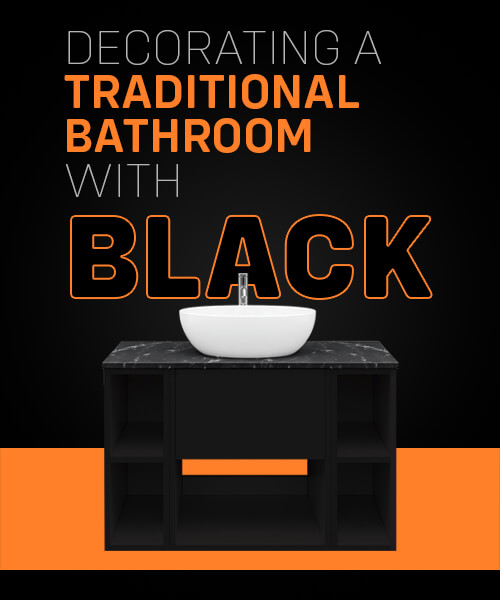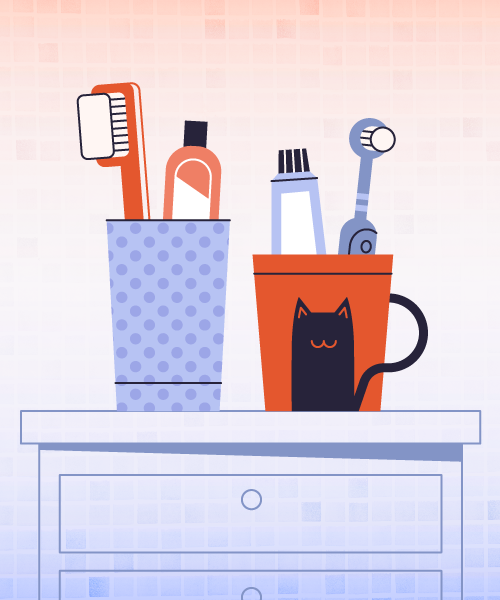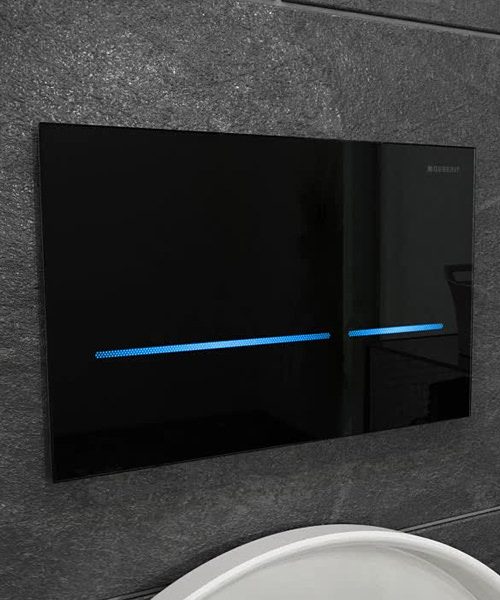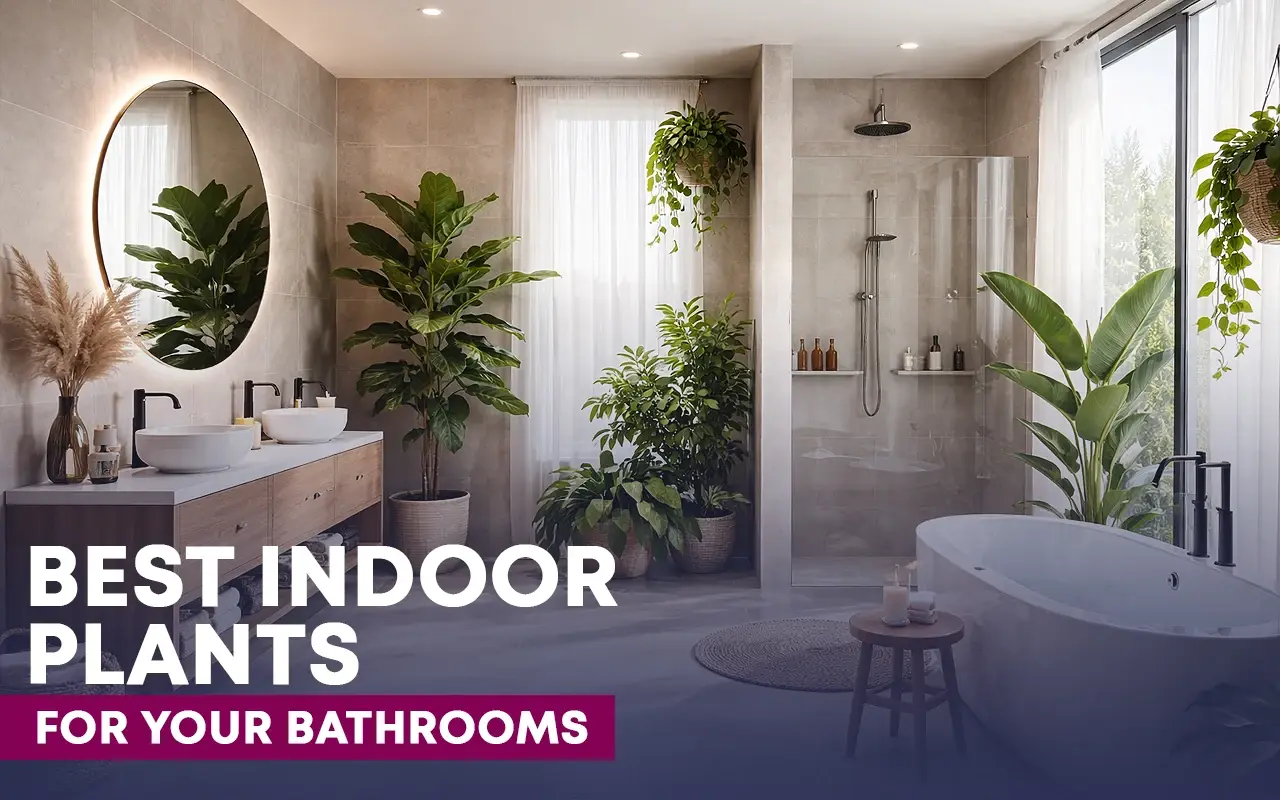
Adding living greenery to your bathroom is one of the most popular trends in home decor, and for a host of reasons. Plants not only help boost oxygen levels and add visual interest, but they can transform an ordinary bathroom into a tropical oasis. Whether you consider yourself an accomplished horticulturist or you’d like to learn more about which plants are best suited for your bathroom, we can help.
There are several reasons a bathroom is an excellent place for indoor plants to thrive:
- Adding living plants helps improve mood and creates visual allure.
- Many plants that are well-suited for the bathroom remove undesirable elements from the air.
- Humid bathroom environments naturally keep plants healthy and happy.
However, you may wonder if having plants in your bathroom might be a problem over time because of concerns like maintaining a watering schedule, choosing the proper plant size, and pruning. Below, find our curated list of plants chosen based on their compatibility with a bathroom’s size, lighting needs, level of care required, and air filtering abilities.
Create the Perfect Bathroom With Plants
Whether your bathroom is small, large, has a lot of natural light, or is windowless, plants can improve the space. On the surface, a bathroom may appear to be a hygienic place devoid of any harmful elements, but many plants that are suited for the bathroom help clean the air.
Bathers should beware if their shower isn’t as clean as possible. There are various types of pathogens and bacteria found in the tap.
When the water from a shower becomes aerial as a mist, potentially hazardous pathogens can travel through the air. A poorly kept bathroom with ventilation problems, rising mist from toilets filled with microorganisms, and a shower curtain teeming with mould, mildew, and soap scum can also further complicate things.
Are you looking for a helpful solution? Here is where plants come in.
- A NASA study published in 1989 displayed how plants can remove VOCs from the surrounding environment.
- Plants help reduce stress levels, and contact with nature improves mood.
- The soil in potted plants also plays a role in cleaning the air.
- Specific plants reduce dust, mould, and pathogens in the air.
Beyond strategically placing a potted plant or two around a bathroom, plants offer plenty of versatility to show off your creative side and get in tune with nature. Some plants can be hung from the shower curtain rod, staggered atop floating shelves, or used to create a living wall.
Don’t worry if you can’t keep a consistent watering schedule or stress about whether a plant is getting enough light. Simply choose a plant from our list that is a better fit for your lifestyle and home.
1. Air Plant
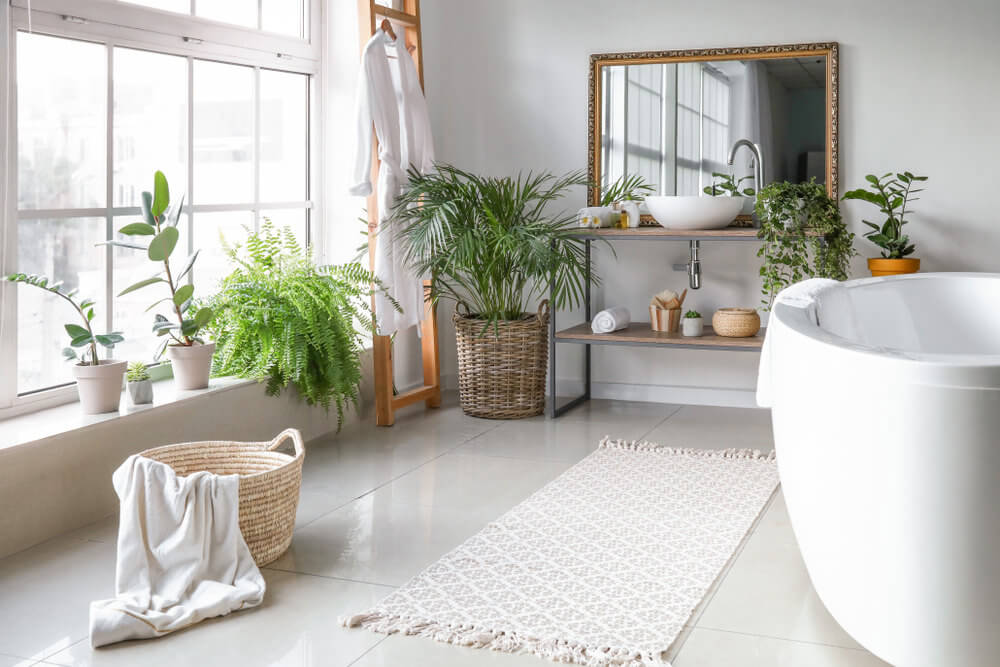
If you are short on space in your bathroom or you wish to avoid traditional pots or planters, consider an air plant or two. Air plants, a type of bromeliad also known as a Tillandsia, thrive in humid bathrooms because the plants absorb nutrients and water from the air. You will want to keep air plants in bright, indirect light.
Air plants are relatively inexpensive and can live for as little as a few months up to a few years, depending on their care. If you give an air plant enough time and patience, you may witness a vibrant bloom once in the plant’s lifetime. The biggest bonus is that these plants can grow pretty much anywhere or hang freely without a pot.
Pros
- Can be grown anywhere without needing soil or a pot
- Easy to care for
- Absorbs water and nutrients from the air
- Loves humidity
- Nontoxic to pets
Cons
- Requires natural light but can withstand artificial illumination
- Overwatering or under-watering damages plant quickly
2. Aloe Vera
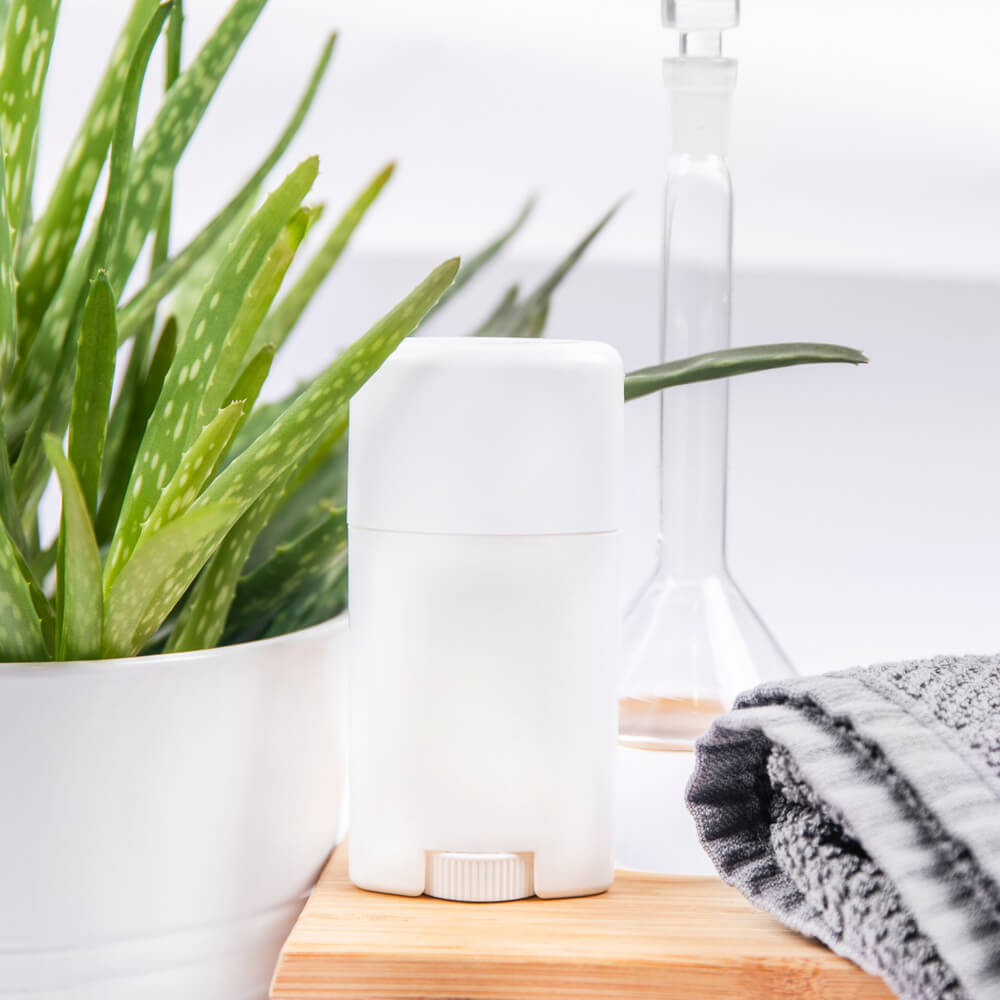
The majestic aloe vera plant is a type of succulent that is not only a beauty in the bathroom, but it provides a host of benefits. The clear gel inside the leaves soothes burns, heals cuts, and moisturises the skin.
Keep aloe vera plants in a moderately sunny window, but don’t overexpose the plants to intense sunlight. Be mindful not to overwater aloe vera, as this plant is hardy and readily absorbs moisture in humid spaces.
Pros
- Attractive and hard to kill
- Contains vitamins, nutrients, and healing gel within its leaves
- Absorbs moisture from humidity
- Readily creates new shoots which make new plants
Cons
- Overwatering will damage this plant
- Doesn’t bloom
- Exterior of the plant is spiky
3. Bamboo
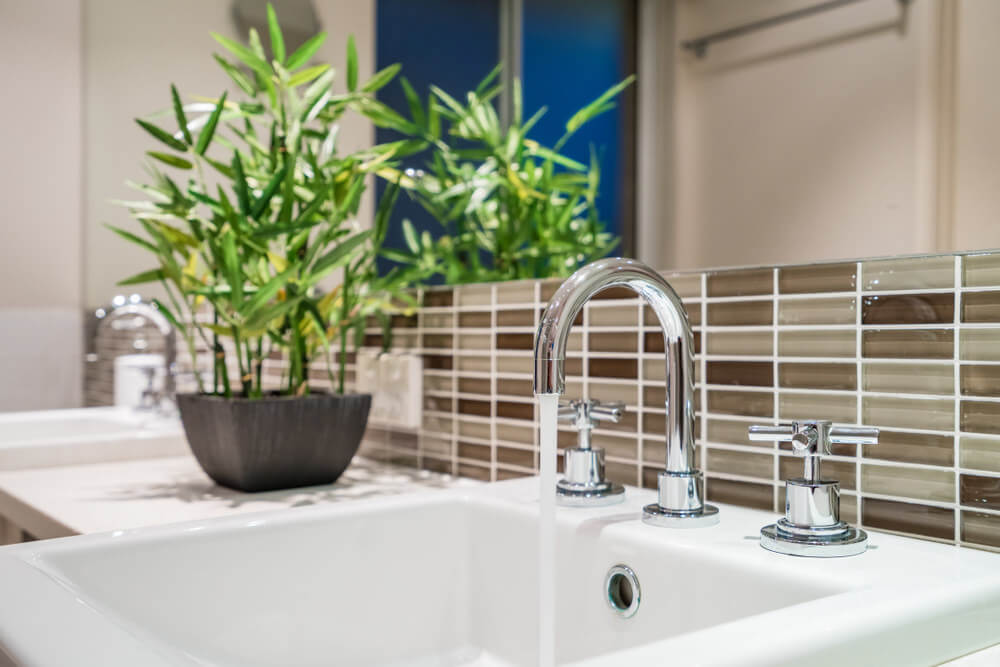
Choose some lucky bamboo plants (Dracaena Sanderiana) for your bathroom, especially if the space is devoid of windows. Bamboo plants are attractive and thrive in low-light environments.
Surprisingly, lucky bamboo is not bamboo at all, but rather a member of the lily family. Grow this plant in water or soil and watch it tower to 2 or 3 feet in height. Make sure to use purified water and to change the plant’s water weekly (if grown in soil, keep the dirt slightly moist).
Pros
- Symbol of good luck
- Resilient plant that loves low light
- Suitable for small or windowless bathrooms
- Low maintenance
Cons
- Needs filtered water
- Prone to yellowing, spots, and pests
4. Bromeliad

Give your bathroom a tropical twist with a bromeliad that thrives in humid and moist environments. Place the plant in a sunny window or keep it under a grow light if needed. Bromeliads make beautiful additions to any bathroom because of their leaves and brilliantly coloured spiky blooms
.Pros
- Plenty of varieties available
- Robust foliage is highly attractive
- Tolerates a range of temperatures
- Loves bright indirect light
Cons
- Needs filtered light to thrive
- Often doesn’t bloom more than once
5. Chinese Evergreen
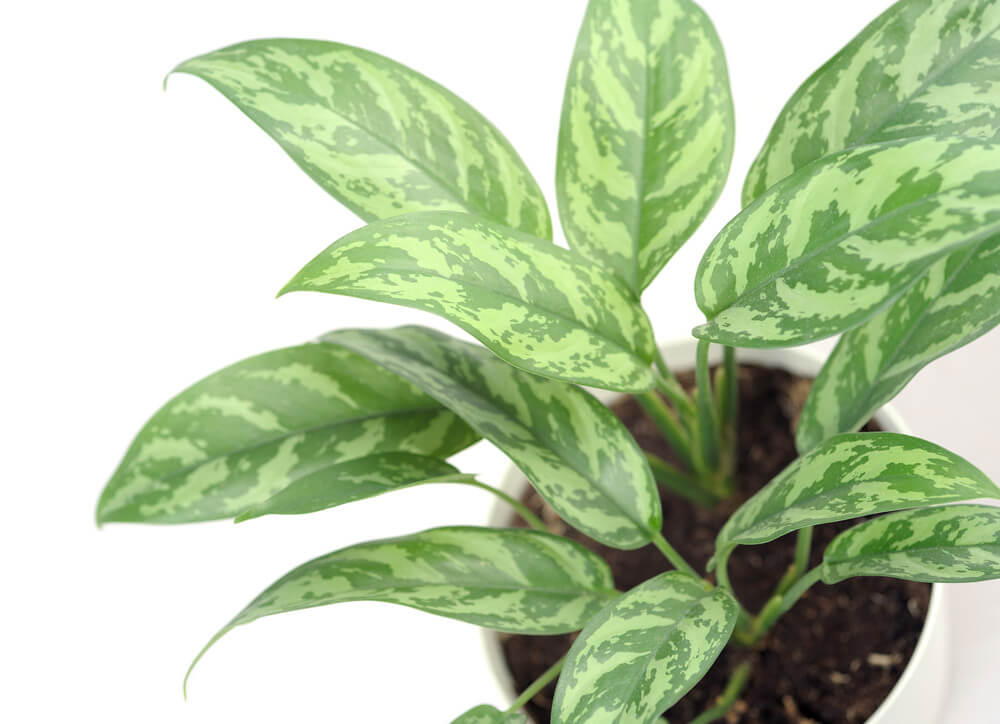
Enjoy the lush beauty of a Chinese evergreen in your bathroom, as these plants love humid conditions and warm temperatures. NASA studied the “silver queen” variety of this delightful plant, which also purifies the air. There are several types of Chinese evergreen.
Pros
- Resilient and difficult to kill
- Cleans the air
- Thrives in low light
- Easy to care for and survives in temperatures as low as 60 degrees
Cons
- Toxic to pets
- Vulnerable to scales or mealybugs
6. Corn Plant (Dracaena)
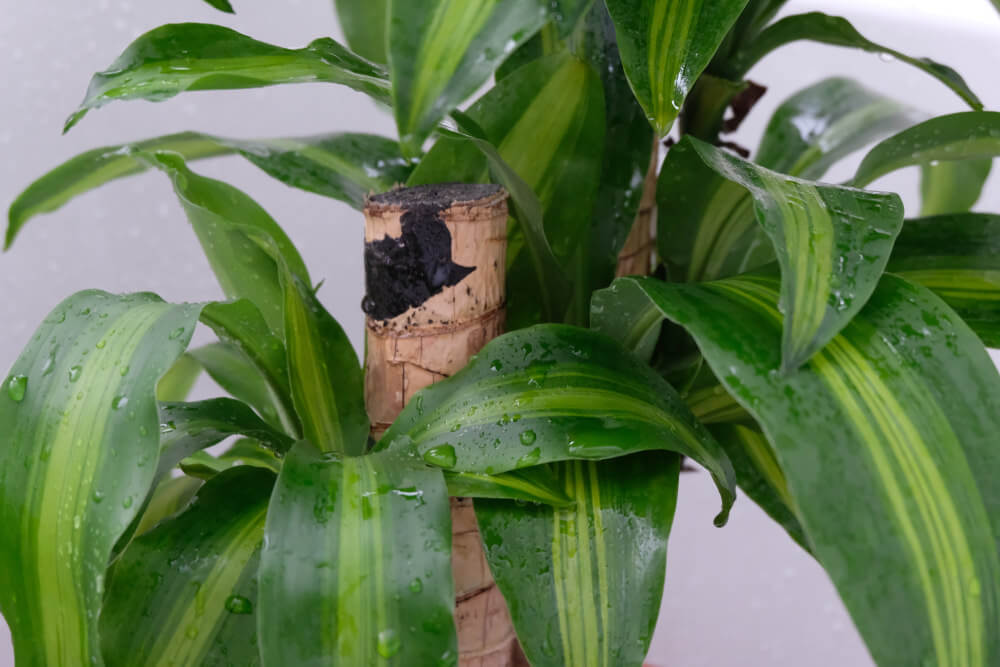
Originally hailing from Africa, the corn plant is a gorgeous, low-maintenance plant with thick stalks and generous foliage. Also known as mass cane, the corn plant has been a popular houseplant since the 1800s. If you are lucky, you might witness the appearance of fragrant white blossoms.
Place a corn plant in bright, indirect light and watch it grow to an astonishing 4 to 6 feet in height. Note that this plant can tolerate moderate to low light, but it thrives in a high humidity environment.
Pros
- Removes volatile compounds (VOCs) like formaldehyde from the air
- Inexpensive and low maintenance
- Thrives between 60 degrees and 75 degrees Fahrenheit
- Attractive, long yellow-green leaves with signature stripes
Cons
- Watch out for fungus gnats, brown spots, and mealybugs
- May be toxic to small pets
7. Dragon’s Tongue (Hemigraphis)
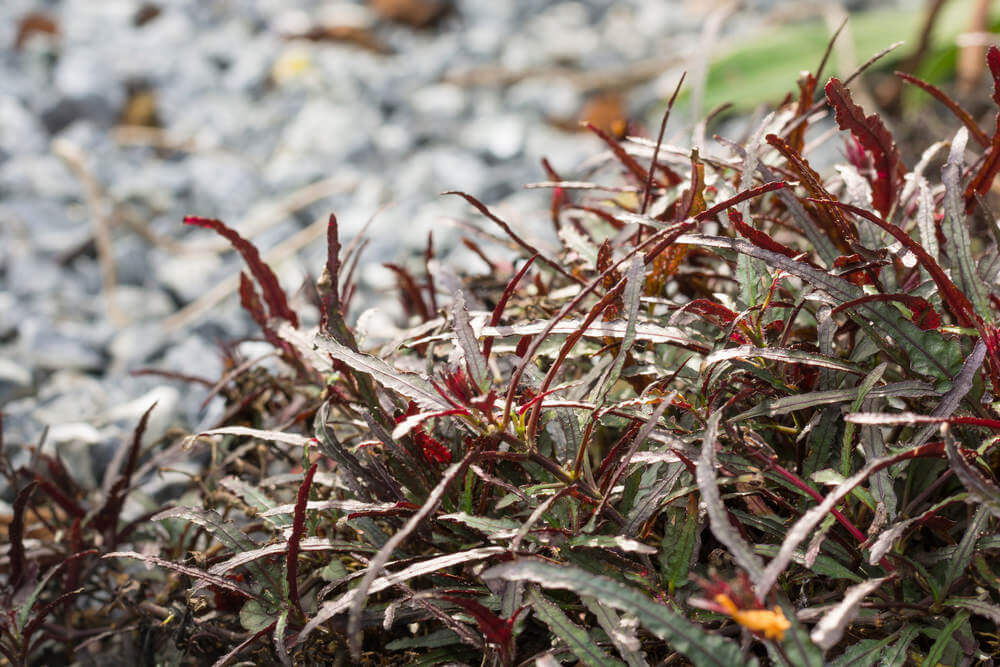
There aren’t many varieties of dragon’s tongue plants available, but their foliage provides a visually appealing ornament to the bathroom. These plants have dark green leaves with a vibrant purple back. Keep your dragon’s tongue plant happy and thriving in a bathroom with high humidity, as they appreciate a hot, steamy shower.
Place a dragon’s tongue plant or two in your bathroom to help remove harmful contaminants like benzene, acetone, and formaldehyde from the air. This is a beautiful and hardy plant.
Pros
- Perfect size for terrariums, small pots, and dishes
- Purple grassy foliage is visually appealing
- Grows in low, medium, or bright light
- Easy to care for
Cons
- Low humidity leads to browning and dry leaves
- Leaves look less purple in low light
8. Dwarf Citrus Tree (Orange or Lemon)
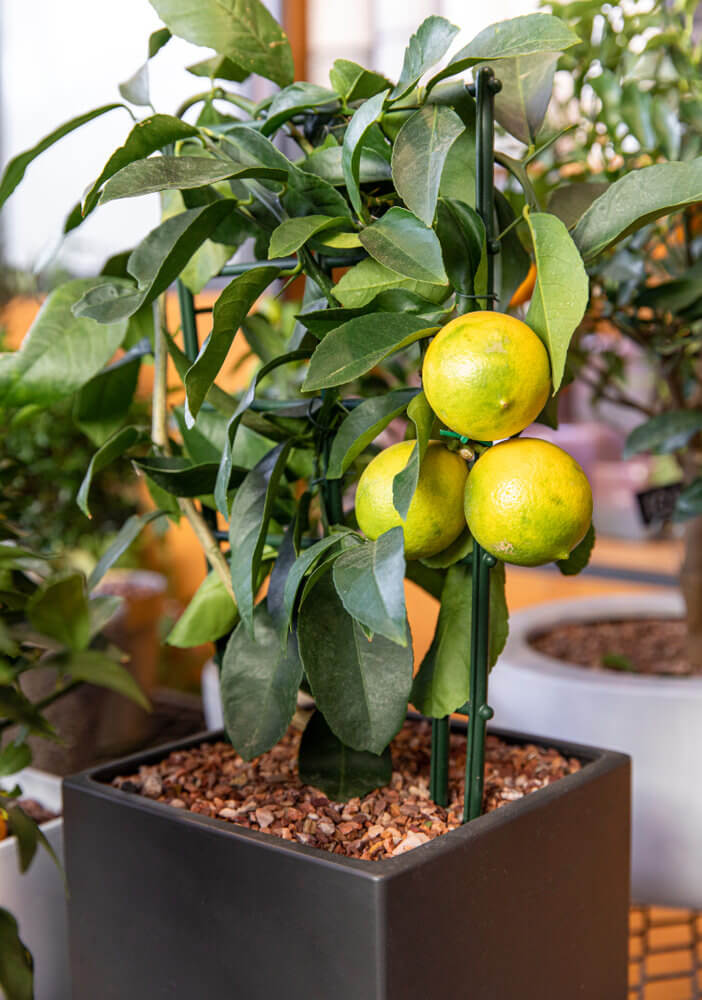
Add a unique and magical touch to your bathroom with a small lemon or orange tree. Yes, you can grow a fruit tree indoors, but the fruits yielded may be on the extra sour side. Keep a dwarf lemon or orange tree in a sunny bathroom where it will get plenty of light.
Note: A citrus tree can manage to reach a height of 2 to 8 feet; careful and planned pruning can help keep a citrus tree small in size. Consider the containers you use to pot your citrus tree and enjoy the sights and scents of citrus fruit indoors while you shower. You might even get some edible fruit.
Pros
- Creates beautiful colour and delightful scents
- Enjoy miniature fruit year-round
- Responsive to pruning, consistent temperatures, and watering
- Loves humidity and sunshine
Cons
- Specific varieties of fruit are best for a dwarf tree
- Vulnerable to certain pests like mites and scales
9. English Ivy
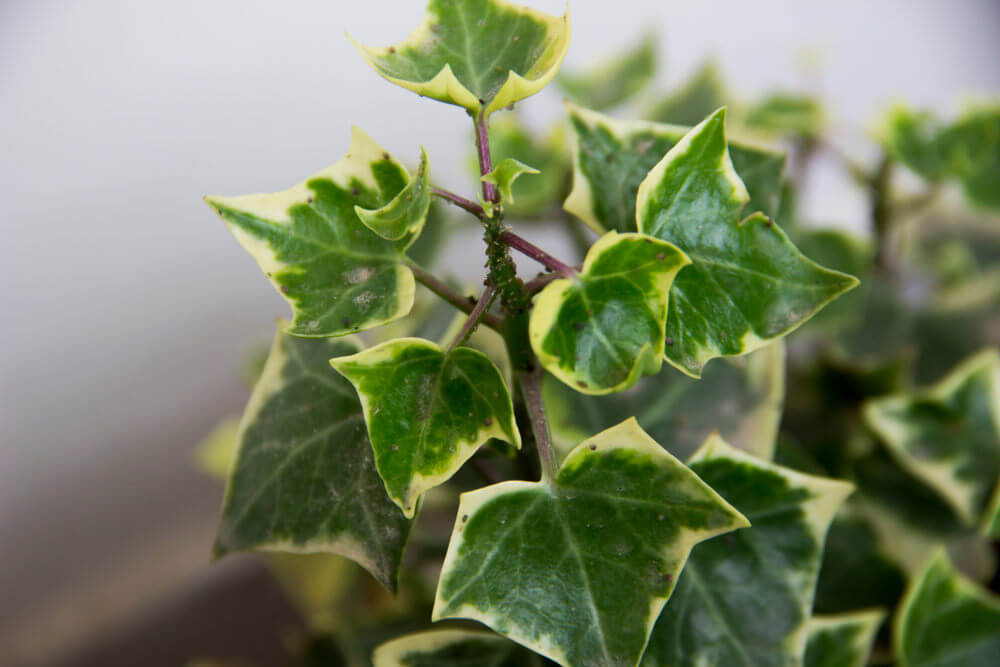
Choose a pot or two of climbing English ivy to hang on your bathroom’s shower curtain rod, or create a living wall of greenery. Ivy is on NASA’s list of air-purifying plants, even removing mould. Allow an ivy plant to make a cascading trail of leaves as it hangs in your bathroom, or place it in a pot on a windowsill or sink counter.
Pros
- Survives in low to moderate light
- Removes contaminants from the air, like faecal matter and mould
- Adds visual drama to a space
- Easy to care for (indirect sunlight is ideal)
Cons
- Can grow out of control if not pruned regularly
- Can cause staining and damage walls
10. Ferns (Kimberly Queen Fern/Boston Fern)
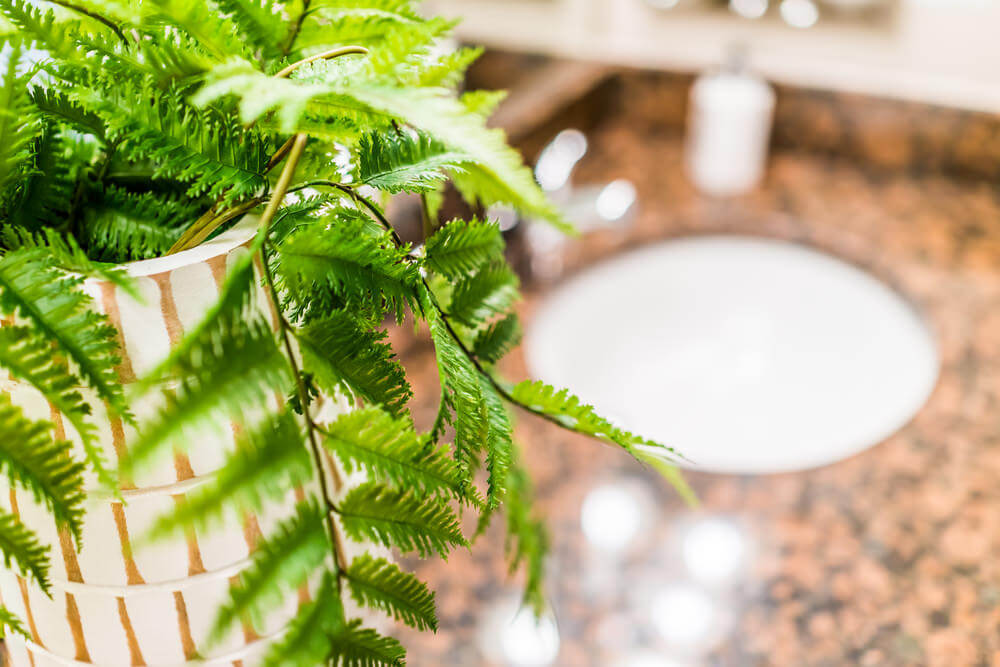
If you like a plant that isn’t too fussy, loves low light and humidity and is attractive and elegant, consider a fern for your bathroom. Both the Kimberly queen fern and the Boston fern are excellent choices to share space with your shower. Hang a Boston fern from a basket and let the leaves cascade down to create a vibrant green wall.
The Kimberly queen fern, also known as the Australian sword fern, is nontoxic to pets and grows its leaves in a neat, compact way.
Pros
- Grows well in moderate or filtered sunny light
- Low maintenance and easy to care for
- Not toxic to cats and dogs
- Looks great hanging from a basket
Cons
- Vulnerable to aphids and mealybugs
- Boston ferns spread out quickly and can take over quickly
- Kimberly queen ferns are very compact with growth
11. Golden Pothos
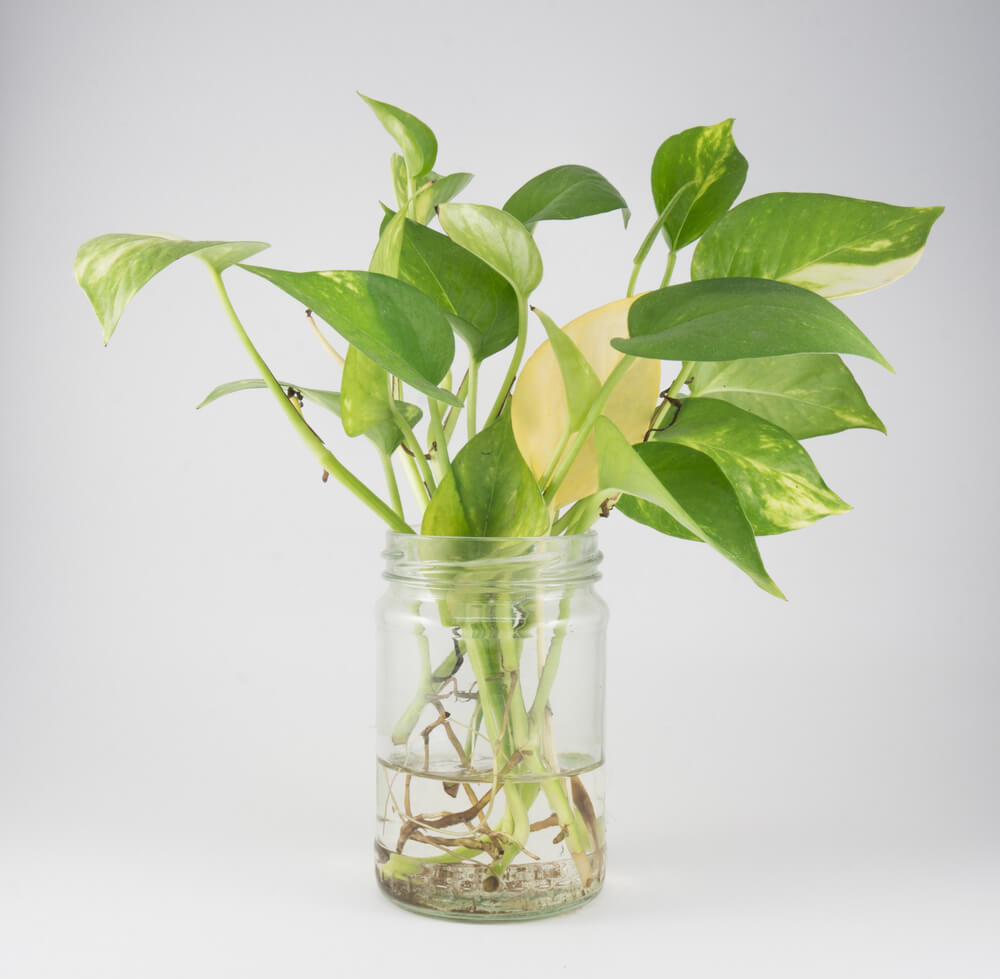
Transform your bathroom into a mini jungle with golden pothos, a plant that creates cascading trails of leaves. Golden pothos is also known as devil’s ivy, and the plant has signature two-toned leaves and extravagant vines. Choose this plant for a sunny bathroom that is warm and damp. Be sure that the golden pothos isn’t overexposed to direct sunlight for too long, as it can damage and dry out the leaves.
Pros
- Beautiful cascading vines and two-toned leaves
- An excellent choice for sunny bathrooms
- Easy to care for
Cons
- All varieties of pothos are harmful to pets and humans if ingested
- Too much direct sunlight or overwatering will harm the plant
12. Heartleaf Philodendron
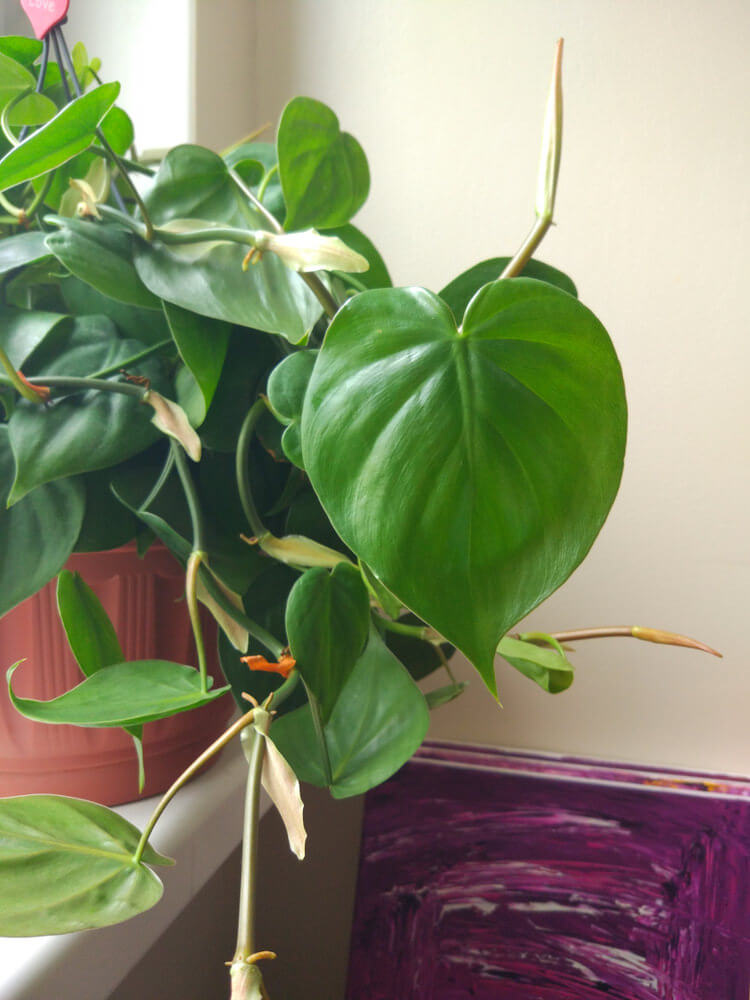
Have a black thumb when it comes to plants? Consider a heartleaf philodendron for your bathroom. This beautiful plant needs low light, humidity, and damp soil to thrive. If you are not up for hanging your philodendron in a basket, place it on the windowsill and let its vines and leaves hang freely.
Don’t worry if you forget to water your plant; the heartleaf plant tolerates neglect and will absorb moisture from the humid air.
Pros
- Suitable for a low-light bathroom
- Vines create green ambience
- Hardy and challenging to kill
- Multicoloured leaves are highly attractive
Cons
- Toxic to pets and humans
- Vulnerable to fungus and insects
13. Jungle Queen (Anthurium)
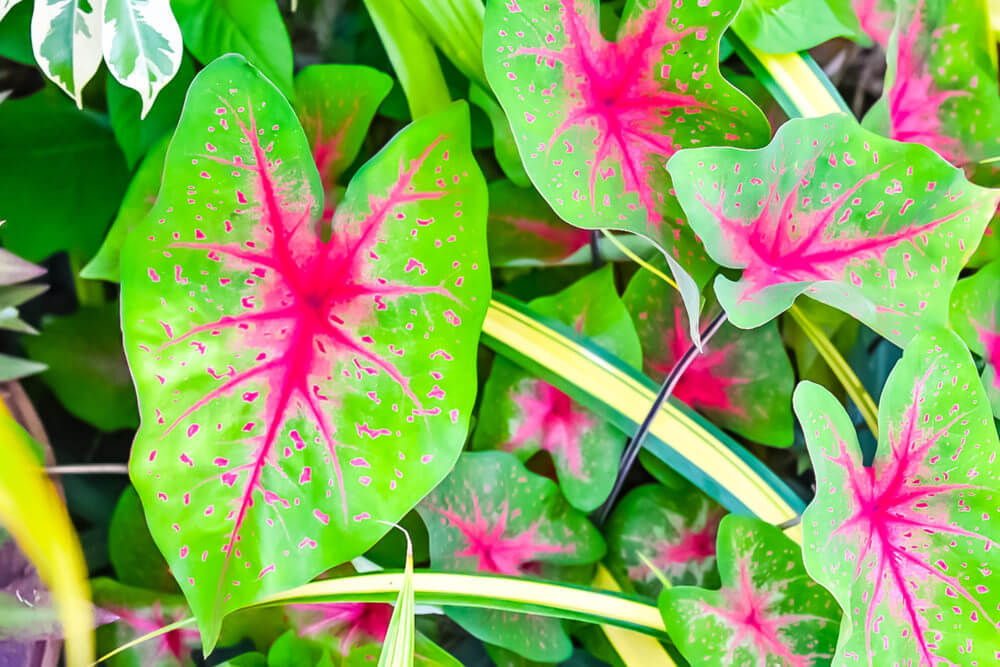
For a larger bathroom, go bold and big with a jungle queen plant. Display an Anthurium in a sizable pot in a corner and enjoy viewing the large variegated leaves. The jungle queen plant brings a sense of drama, can reach a staggering 5 feet in height, and no two plants are alike. You may get a plant with dark purple leaves, with some touches of cream, white, or pink. The visual appeal for these plants grows with the plant, and they have a unique vase shape.
Pros
- Tolerates drought
- Thrives under low, medium, or high light
- A beautiful array of colour variation with leaves
- Grows easily and purifies the air
Cons
- Better suited for a larger bathroom
- May take a while to see blooms
14. Majesty Palm

Create your tropical oasis with a grand plant that loves sunlight (though it needs to avoid direct sunlight to prevent burns). Grow a majesty palm in a medium to large bathroom for a sense of drama and visual interest. Give your palm plant six to eight hours of bright light daily and ensure it receives enough water.
Pros
- Low maintenance and robust
- Loves sunlight
- Impressive fronds with visual appeal
- Nontoxic to humans and pets
Cons
- Vulnerable to spider mites; wipe down leaves
- Suitable for larger bathrooms
15. Moss
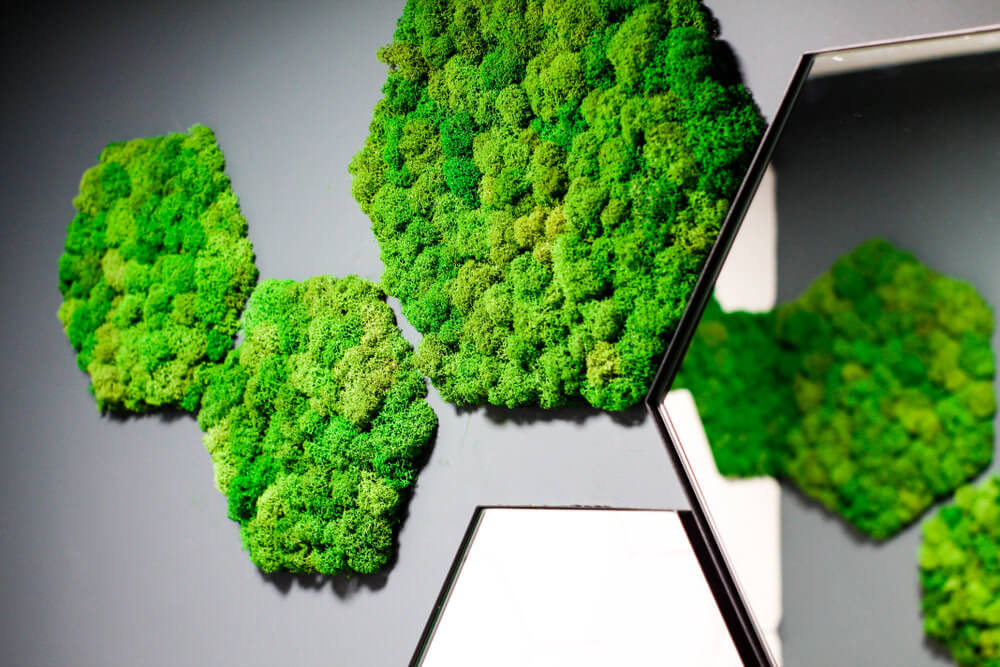
Whether you have a tiny bathroom or a lavish powder room, consider growing some moss in your home. Create a living wall of moss or a moss bath mat, or decorate your bathroom with terrariums teeming with it. You will appreciate moss for improving your home’s air quality, as pollutants will stick to moss and get converted into biomass.
Pros
- Excellent for a living wall or bath mat
- Inexpensive and easy to grow
- Adds texture and colour
- Reduces airborne dust and mould
Cons
- Doesn’t have blooms
- Can easily tear
16. Nerve Plant (Fittonia)
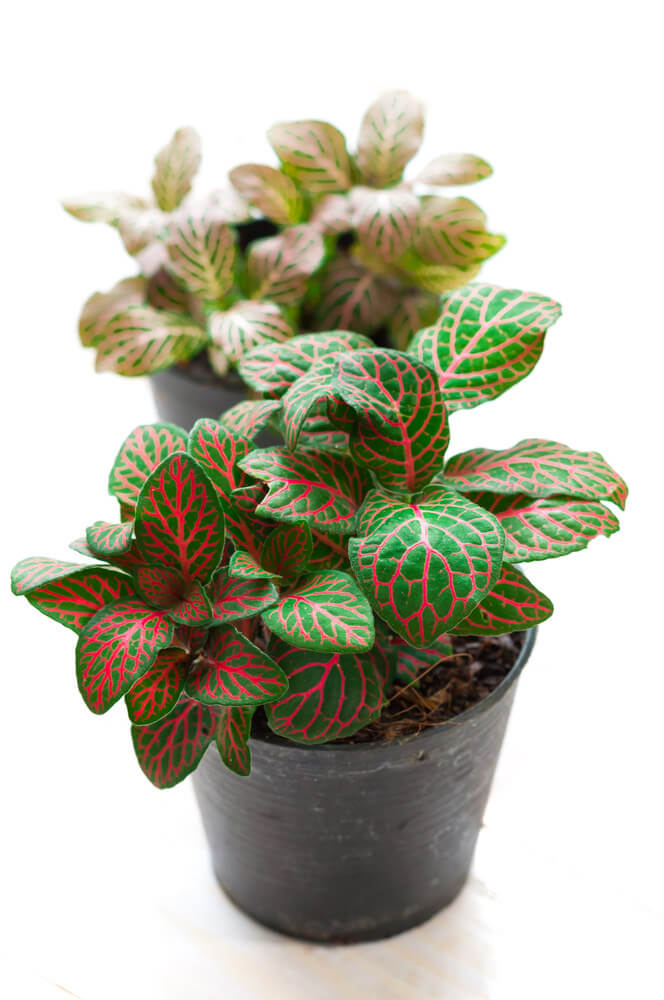
Are you living with a windowless bathroom or one that has little to no natural light? Consider keeping a nerve plant in your bathroom, which will thrive under the light of a bulb. If you are curious about making a living wall of plants, the nerve plant is an excellent choice because it grows vertically.
Choose this attractive tropical plant if you are limited on space and light, and you enjoy the visual appeal of hanging plants and terrariums.
Pros
- Several varieties available
- Grows well with low or unnatural light
- Can be hung, added to a terrarium, or used in a living wall
Cons
- Harmful if ingested
- Requires constantly moist soil
17. Orchid
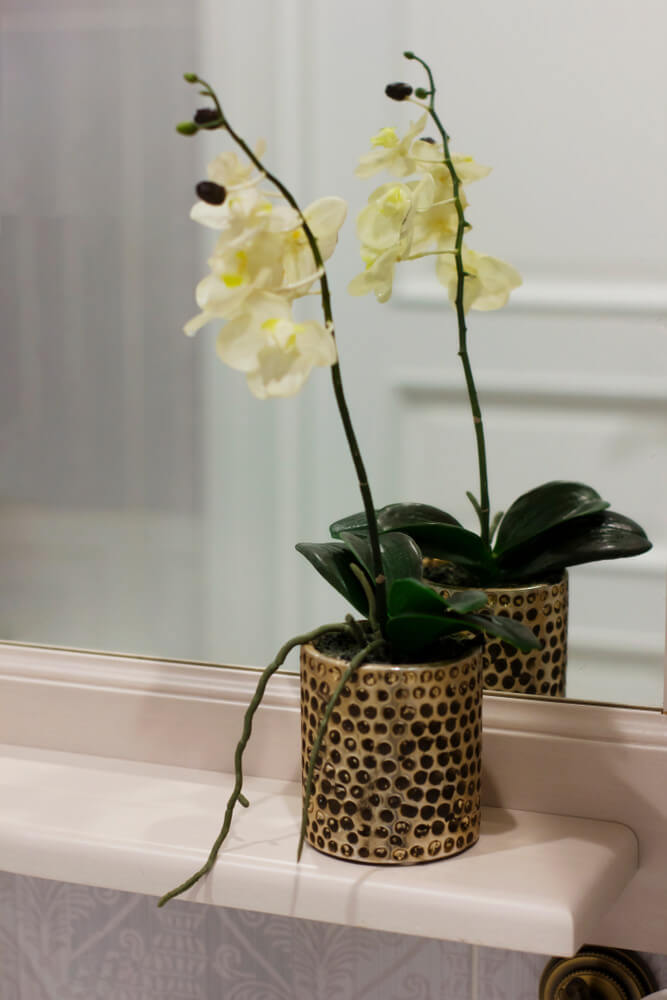
Reinvent your bathroom with the addition of tropical, fragrant, and attractive orchids. Thanks to their popularity, many species of orchids are inexpensive and not too fussy about growing indoors. Orchids of the Phalaenopsis variety are reasonably easy to care for and offer attractive blooms.
Orchids love the humidity in an average bathroom, and they require a modest amount of bright, filtered light to thrive. Grow an orchid in damp bark and leave the soil behind.
Pros
- Grows in bark
- Beautiful blooms in a variety of colours
- Flowers may last for months for plenty of visual appeal
- Suitable for a humid bathroom
Cons
- May develop rot or mould
- Needs weekly fertilisation
18. Peace Lily
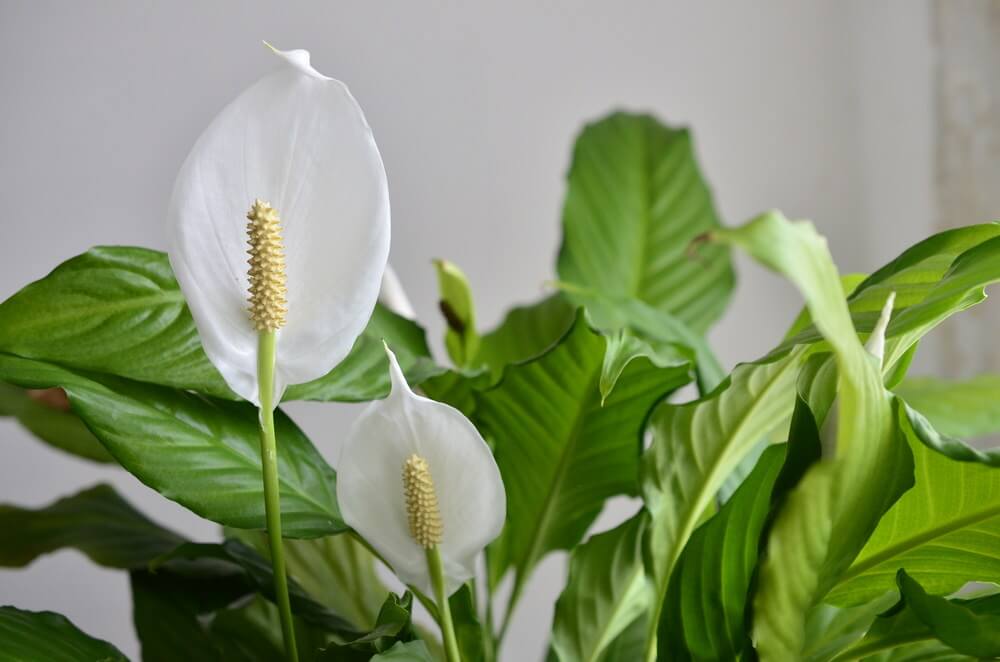
There is no plant quite like the peace lily, which has a rich history, cleans the air, and has elegant, dark pointed leaves. If you are worried whether your peace lily has enough water, observe the stems: They will droop when the soil is parched. The white flowers on this plant are unique in appearance, and this plant is an international symbol of peace.
Pros
- Larger plant that would be a good fit for medium to large bathrooms
- Attractive, dark pointed leaves and a fascinating bloom
- Purifies air
- Symbol of peace
Cons
- Be mindful of root rot
- May develop yellow or brown leaves in inconsistent lighting
19. Snake Plant
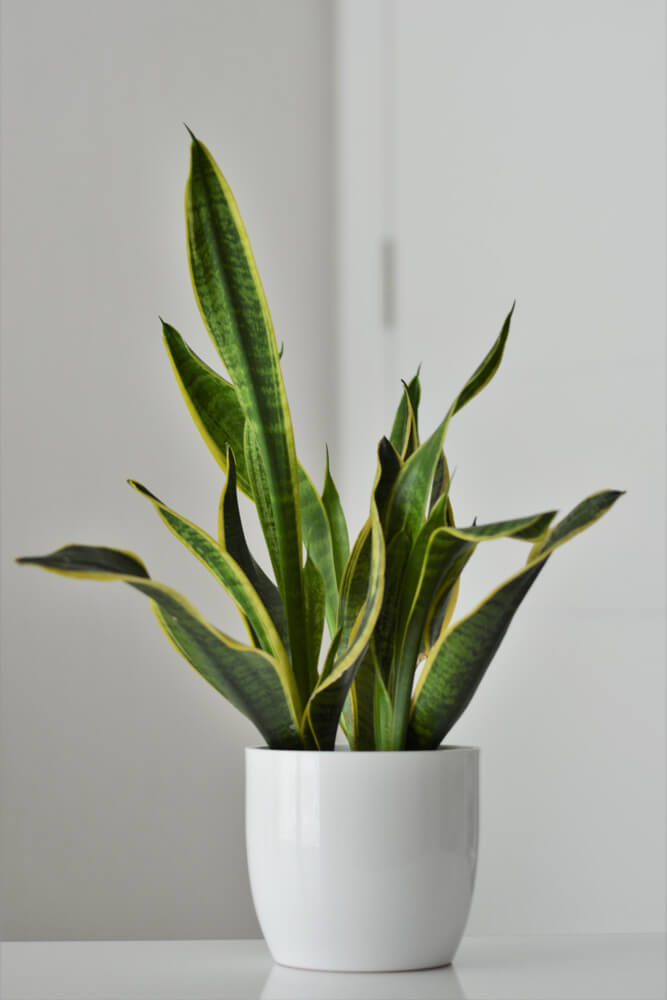
Also known as mother-in-law’s tongue or St. George’s sword, the snake plant is a popular choice for bathroom decor. Choose this hardy and beautiful plant for a bathroom that has either low light or bright, direct light. Don’t worry about forgetting to water this plant, as it will thrive in a humid bathroom.
Pros
- Thrives in a variety of lighting
- Cleans the air
- Tolerates neglect
- Tall leaves are visually appealing
Cons
- Toxic to humans and animals
- Doesn’t have blooms
20. Spider Plant
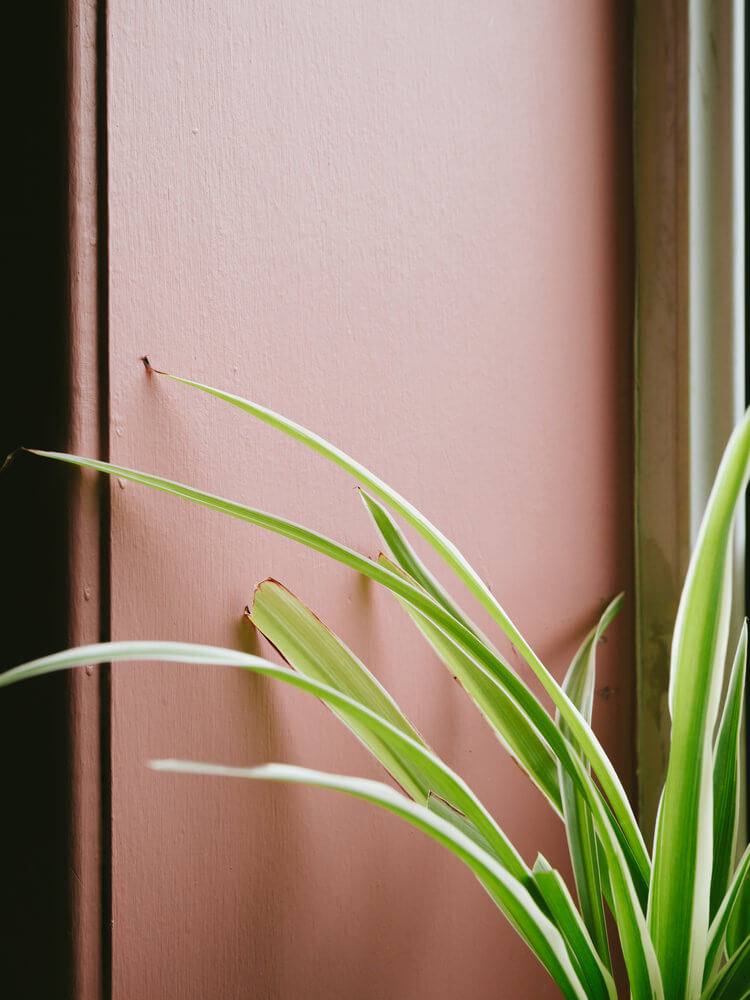
You may recognise the spider plant from its popularity as an indoor plant in the 1970s. This plant removes toxins from the air, is easy to care for, and is perfect for hanging in the shower. Provide spider plants with low light, moderate humidity, and room to grow.
Pros
- Thrives in low light and modest humidity
- Excellent choice for hanging
- Filters toxins from the air
- Grows with an abundance of hanging shoots
Cons
- May require frequent pruning
- Better suited for hanging
21. Ti Plant (Cordyline)
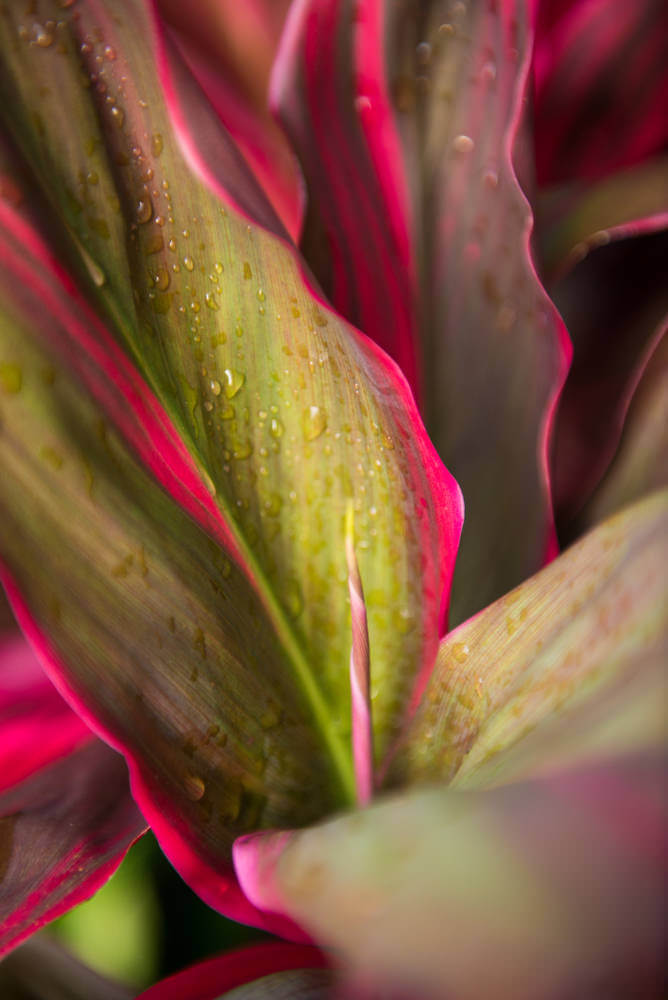
If your bathroom needs a burst of colour, consider a Ti plant, also called a good luck plant or cabbage palm. This tropical plant has large, glossy maroon leaves. Make sure a Ti plant gets plenty of indirect bright light, and keep the soil moist. Note: The sap of this plant may be poisonous to humans and pets.
Pros
- Filters air of formaldehyde, benzene, and trichloroethylene
- Large leaves grow in a variety of colours
- Some types produce fragrant blooms and berries
- Thrives in bright light
Cons
- Has poisonous sap that is harmful to pets and humans
- Needs high humidity and consistently moist soil
22. Tropical Pitcher Plant
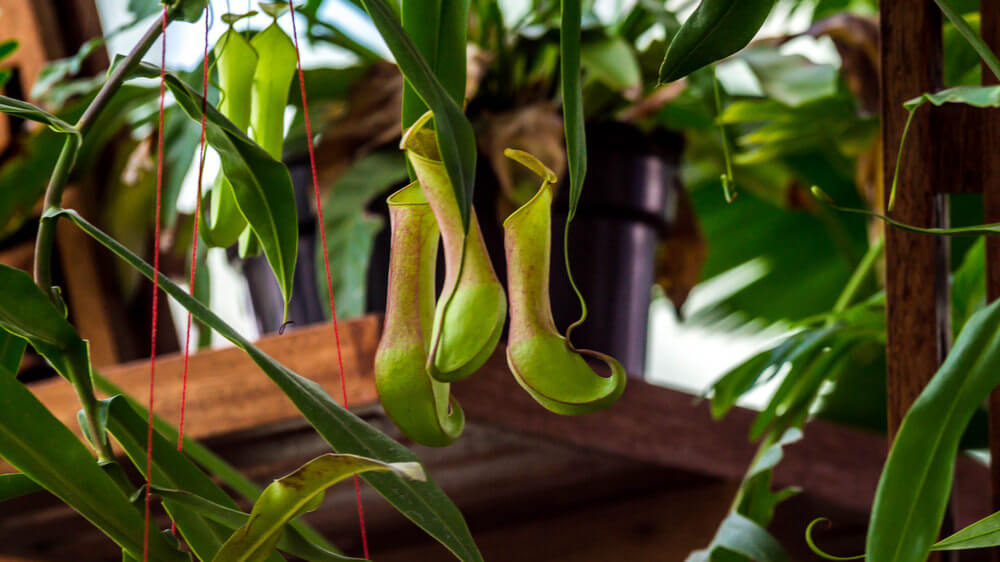
Make your bathroom a more lively place with the addition of a tropical pitcher plant. This type of plant is a carnivore and feeds on insects, but not to worry; there are typically enough pests in your home to keep it fed. Also known as monkey cups, pitcher plants thrive in a bathroom with high humidity (though they will tolerate a low-humidity bathroom).
Pros
- Good for windowsills
- Loves high humidity
- Eats insects
Cons
- Varying blooms don’t have a scent
- Too much moisture or low temperatures lead to yellowing leaves
Let the plant world inspire you while searching for the perfect bathroom decor, whether you create a living garden wall, display an array of potted plants, or opt for a terrarium or two. Adding a plant to a bathroom can give a welcome touch of colour and clean your home’s air, as well.
While this guide should give you a head start on deciding which plants to add to your bathroom, we can help you furnish and decorate the rest. At QS Supplies, you can browse over 30,000 designer products – all that go beyond the basics. From minimalistic fittings to wall-hung vanities and LED lined mirrors, we have everything you need to make your bathroom unique. All you have to do is add a plant or two.


